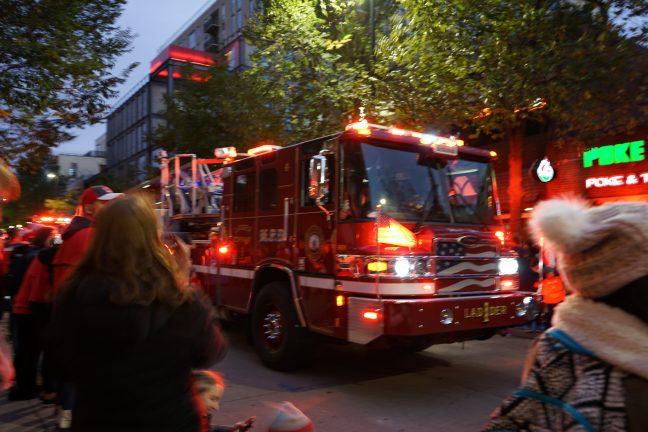The Wisconsin Department of Natural Resources and the Department of Agriculture, Trade and Consumer Protection are starting a program to collect PFAS containing firefighting foam from Wisconsin fire departments.
The DNR kicked off the program at a collection event in Appleton Oct. 17, according to a DNR press release.
PFAS, also known as perfluoroalkyl and polyfluoroalkyl substances, are man-made chemicals used in many substances including firefighting foams. They are known to persist in the environment for long periods of time and negatively impact human health, according to the DNR.
State law bans the use of PFAS-containing foams except in emergency situations and during training exercises at a facility with a collection system in place, according to a press release from Tony Evers’ office.
In many cases, fire departments need to store the PFAS-containing firefighting foam after switching to PFAS-free options due to the cost and logistics associated with disposing of the foam.
Appleton Fire Chief Jeremy Hansen said the Wisconsin State Fire Chiefs Association has been working with lobbyists and legislators in Madison to gain support for funding the PFAS firefighting foam collection program for two years.
“We’re really excited for this,” Hansen said. “Twenty-five thousand gallons of foam is being picked up and disposed of properly. That’s really great for the communities, especially for smaller departments that do not have a funding source to dispose of it.”
The Appleton Fire Department doesn’t have a good replacement for the PFAS-containing firefighting foam yet. Firefighters use the foam in Class B incidents, or petroleum-based fires, which are rare. Alternative foams that don’t contain PFAS are available, but data indicates that it takes double the PFAS-free foam to stop a fire, Hansen said.
The Appleton Fire department is looking into creating a foam bank with other departments in the area to share the cost burden, Hansen said.
North Shore Environmental Construction is managing the collection and disposal of the PFAS-containing firefighting foam. Executive Vice President Dave Johnson said the company collected foam from fire departments before, but in those cases the fire department needed to pay for the disposal themselves.
With the new collection program, all fire departments in Wisconsin can dispose of their PFAS-containing foams, including smaller rural departments who might not have the funding to pay for disposal on their own.
After the foam is collected, North Shore Environmental Construction brings it to a hazardous waste landfill in Alabama. From there, it goes through a solidification process in which the foam is bound in a concrete block and then placed in the landfill. Between the concrete block and the landfill’s on-site wastewater treatment, Johnson said the PFAS containing foam should never leave the landfill.


